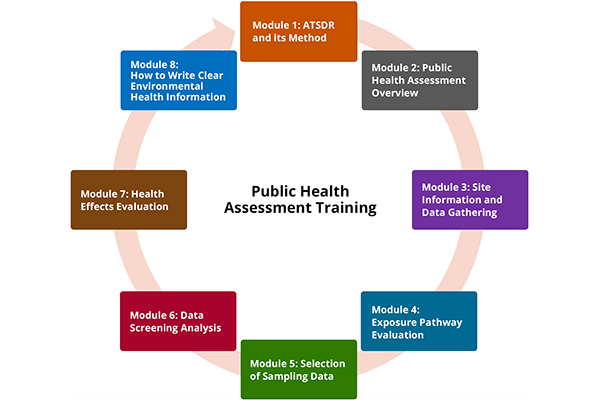Public Health Assessment Guidance Manual (PHAGM)

The PHAGM outlines methods and resources that environmental health professionals can use to evaluate environmental exposures associated with an industrial facility, commercial facility, or hazardous waste site.

ATSDR's Public Health Assessment Training (PHAT) modules help environmental health professionals understand the public health assessment process.
Glossary

This provides definitions for many terms used in PHAGM and words used by ATSDR in communications with the public. It is not a complete dictionary of environmental health terms.
Resources

This stores various types of information sources that you will need when performing the different phases of the PHA process, such as ATSDR guidance documents and available data sources.
Toolbox
This houses the tools, such as checklists and templates, that are included within the individual PHAGM sections. These tools are useful to the health assessor during the PHA process.
[ATSDR] Agency for Toxic Substances and Disease Registry. 2022. Public health assessment guidance manual. Atlanta: US Department of Health and Human Services [accessed {insert PHAGM access date}]. Available from: https://www.atsdr.cdc.gov/pha-guidance/index.html.